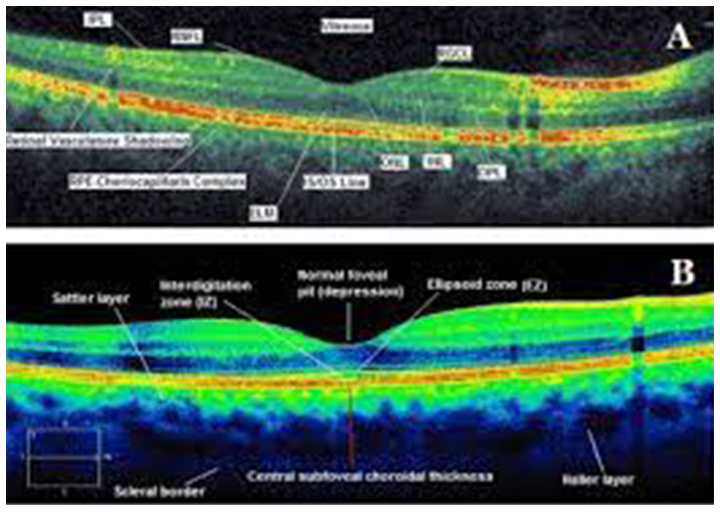ABOUT THE RETINA
The retina is a vital component of the eye responsible for receiving and transmitting visual information to the brain. It consists of tiny photoreceptor cells that capture light rays and convert them into electrical impulses, which are then transmitted via the optic nerve for interpretation by the brain.
Retinal diseases, particularly those affecting the macula (the central part of the retina), can lead to various visual disturbances. Recognizing these symptoms is crucial for early intervention. Common symptoms include:
- Blurred vision, especially in the central field.
- Wavy or distorted vision, particularly when looking at straight lines.
- The sensation of a curtain obstructing vision from any direction.
- Flashes of light in peripheral vision, often more noticeable at night.
- Floaters, described as specks, circles, or worm-like shadows that move with eye movement.

Retinal diseases can arise from various factors, including:
- Infections: Bacterial, fungal, and viral infections can affect the retina.
- Age: Aging processes, especially affecting the macula, can impact retinal health.
- Heredity: Conditions like retinal dystrophies can cause vision loss and other issues from a young age.
- Eye trauma: Physical injuries to the eye can lead to retinal problems.
- Systemic diseases: Conditions like diabetes and hypertension can have adverse effects on the retina.
Early diagnosis of retinal disease is crucial for effective management of these conditions and testing includes:
- Complete eye exam, including dilation and special magnifying instruments.
- Photography to document retinal conditions.
- Fluorescein angiography to assess blood vessel leakage.
- Optical Coherence Tomography (OCT) for detecting signs of elevation, fluid accumulation, scarring, or membrane formation.
- Indirect ophthalmoscope for identifying peripheral retinal issues like tears and detachments.
- Ultrasound to examine the eye’s back when direct observation is challenging.
- Amsler grid to assess central vision clarity.
Treatment options for retinal diseases are diverse and tailored to the specific condition. They include:
- Preventative therapy with vitamins.
- Surgery for retinal detachment, performed in-office or in the hospital.
- Laser treatment to seal leaky blood vessels, commonly used in diabetic retinopathy.
- Injections like of medicines to inhibit abnormal blood vessel growth and prevent central vision damage.
Preventing retinal disease involves regular eye care and awareness of risk factors. High-risk individuals include:
- Diabetics.
- Older patients.
- Individuals with a history of cataract surgery.
- Those with a family history of retinal disease or hereditary conditions.
- People who have experienced eye trauma.
Retinal diseases can significantly impact vision, but early detection, understanding the causes, and appropriate treatment can make a substantial difference in maintaining eye health. By recognizing symptoms, undergoing regular eye exams, and managing risk factors, individuals can take proactive steps towards preserving their vision.

